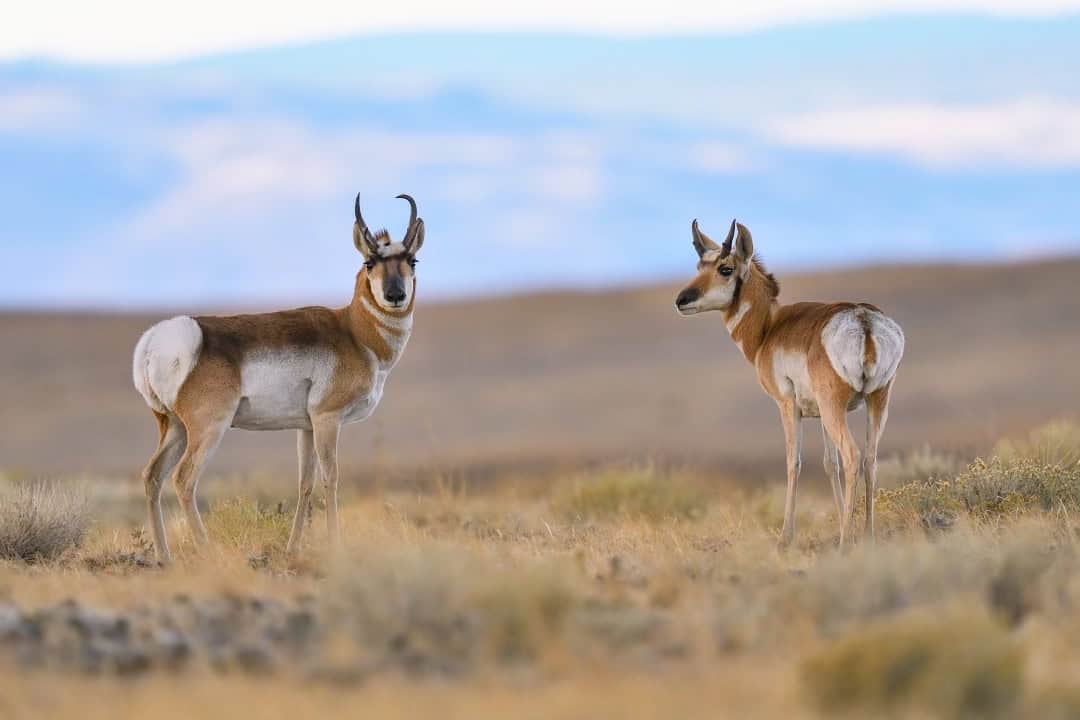Share this article
Wildlife Featured in this article
- Grizzly bear
- Gray wolves
JWM: Are Yellowstone recreation restrictions beneficial to bears?
Male grizzlies may not be using some areas in the same way they used to
Recreational restriction periods in some parts of Yellowstone National Park may not match up with the times grizzly bears use the areas.
Researchers looking at how bears use resources on the landscape found ways the National Park Service may improve a system intended to reduce human-bear conflict that was developed decades ago.
“It’s helpful for managers to continually assess [management restrictions] and continue to explore these questions,” said TWS Elise Loggers, a graduate student at Montana State University.
In the 1980s, Yellowstone park managers restricted recreational activity in some parts of the park at times when they typically had heavy bear activity. These restrictions varied depending on the area, since grizzly bears (Ursus arctos) tend to move around throughout the year searching for the best available food.
Researchers have been tracking grizzly bears in Yellowstone using GPS collars for the past two decades. The Interagency Grizzly Bear Study Team has collected GPS locational data for decades. Loggers led a study published recently in the Journal of Wildlife Management, tapping into this data and comparing it to the restriction zones.

The data revealed that overall, during certain times of the year, the bears spent more time inside these bear management areas with recreational restrictions than outside of them.
But Loggers and her colleagues found the sex of the bear made a difference regarding when the bears used these zones. While females typically stayed in the area whether or not it was during periods when recreation was restricted, male grizzlies actually spent more time in bear management areas when there were no restrictions on human recreation.
Loggers said that this discrepancy might reflect changes within the park. Over the past century, wildfire has burned about 60% of Yellowstone. In addition, some tree species, like whitebark pine, have decreased in the park. Meanwhile, food resources for bears like cutthroat trout (Oncorhynchus clarkii) have become scarcer. Predator-prey dynamics have shifted since gray wolves (Canis lupus) were reintroduced and altered. These predators altered the time and place ungulate prey is available for bears in some cases.
Any or all of these factors may have contributed to changing the places where bears forage for resources at different times of the year.
“There’s probably a mismatch in when bears are using their food resources that are in bear management areas now versus in the 1980s,” Loggers said.
This mismatch has implications for the way the National Park Service organizes the bear management areas, since there is a greater chance for human-bear conflict in areas used more densely by bears.
She hopes that park managers will be able to use the results of this study to inform restriction planning in the future that would benefit bears while still providing people with as many opportunities for recreation in the park as possible.
This article features research that was published in a TWS peer-reviewed journal. Individual online access to all TWS journal articles is a benefit of membership. Join TWS now to read the latest in wildlife research.
Header Image: A grizzly bear rests after feeding on an elk (Cervus canadensis) carcass.








